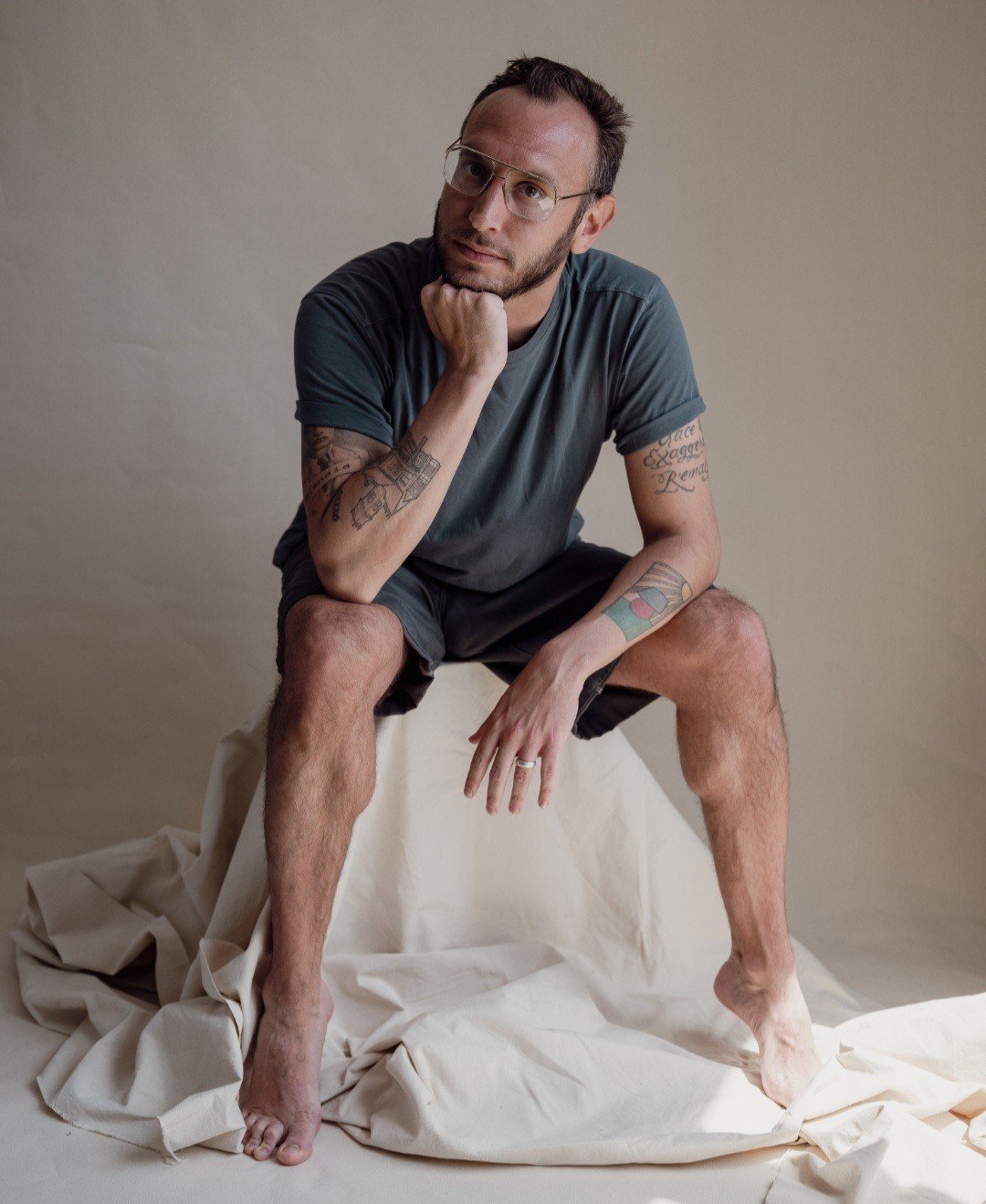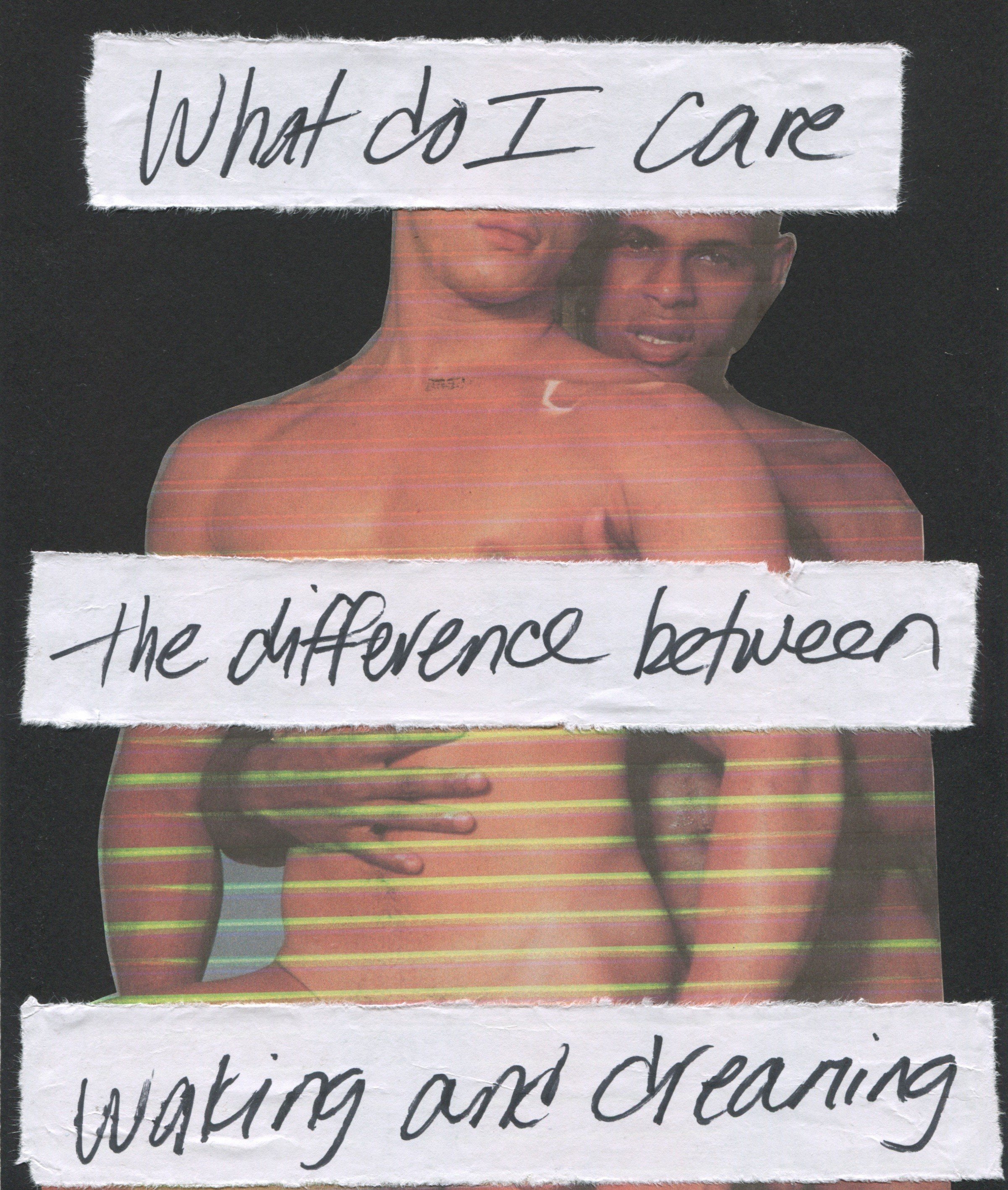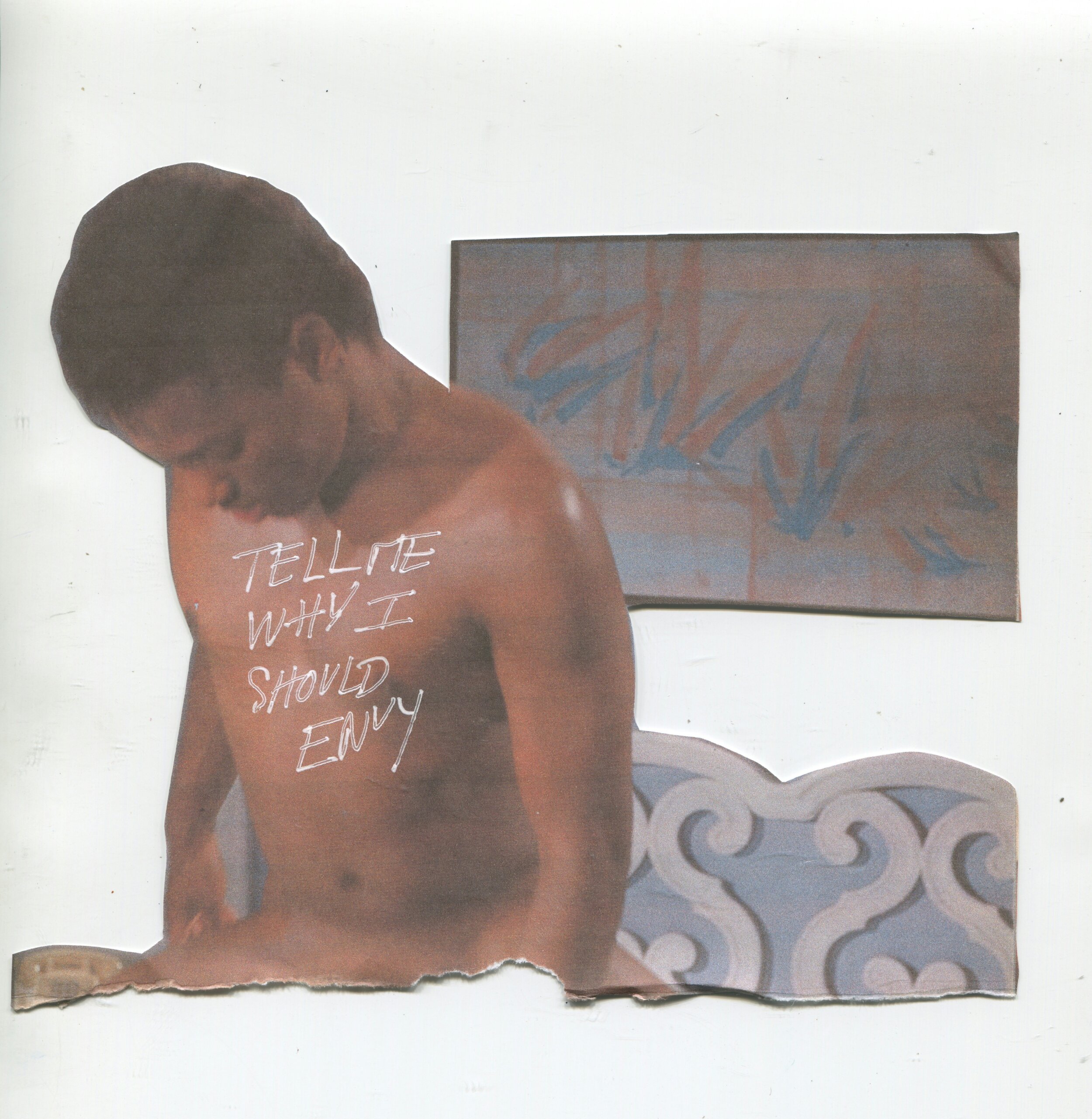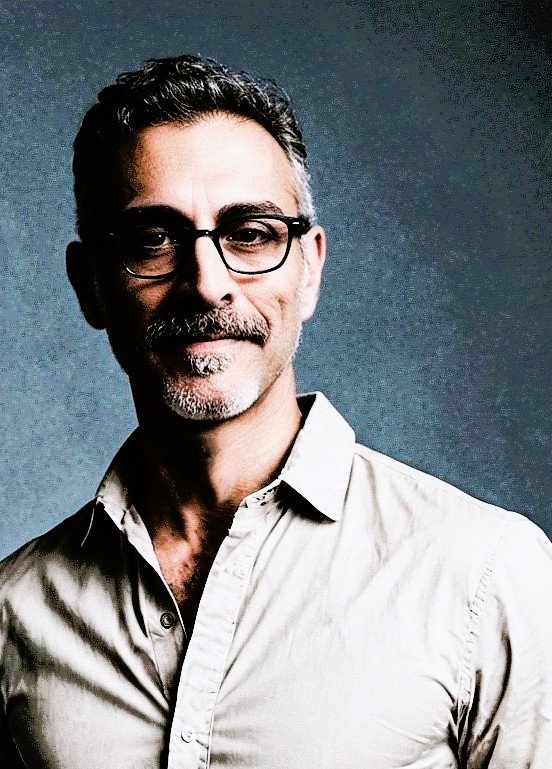beneath and beyond the art: an interview with jason haaf
by David Estringel
Photo of Jason Haaf (Photo by Patrick Lupinski)
Each day seems to be a test in tolerance and patience when it comes to navigating social media. I can’t remember the last time I signed onto X or Facebook and DIDN’T see videos of fights in school hallways, vioent exhibitions of road rage, or ridiculous quizzes that promise to help me determine what kind of witch I am. One that is over it, actually.
As of late, things have gotten pretty desperate in that department, until I was connected by my new pen pal, Scooter LaForge (see last month’s interview), to one of his NYC collaborators, Jason Haaf. I perused Jason’s Instagram feed in full internet stalker-mode and was immediately barraged by an onslaught of vintage gay erotica. My initial response was indifferent not being one to appreciate shock art—nudity for the sake of being naked, to be specific—but much to my surprise, I came to realize my judgy ass acted in haste, and I had this young artist’s work all wrong.
I grabbed an energy drink from the fridge and a Lucky Strike and sat with Jason’s work for a bit, and I have to say there was a bit of low-level devastation happening (in the best possible way) the more I scrolled. The pornstar mustaches, inapppropirately tight gym shorts, and feathered hair pulled me back to the good ol’ days when images like this were the shit for little, closeted gay boys like me. This was actually the stuff of fantasy once upon a time (believe it or not), and I apparently had forgotten that. Even more striking were the lines of verse stetched across the faces of these images that were reflective and observational in a very contemporary way. I can’t recall ever engaging with art that was able to facilitate my simultaneously holding internal and external spaces like that. I was beyond impressed.
Obviously, I needed to know more. Luckily, Jason was more than willing to chat and share his work with me over the next few weeks. Apart from Blood+Honey being fortunate enough to feature his work this month, which I now love almost as much as I do nicotine, Jason agreed to chat with us for a bit about his art, his process, and his future creative plans.
The Interview:
B+H: Jason, right now your work is very multimodal, expressing your creativity with words and images. In a world that loves labels, exactly how would you “label” what you do?
JH: So, I would say “mixed-media,” I mean a combination of writer and artist. I don’t know if there’s a better more eloquent word for it, but ultimately it is what it is.
“Tranquil” by Jason Haaf
B+H: Right on. Your work is quite unique in its content and presentation with its use of vintage gay erotica and verse. When exactly did this creative direction “spark”?
JH: Well, I went to school for writing, and then I moved to New York. I didn’t write or make art for years. Instead, I ended up going into hotels and hotel management. Then one night, I was up late with my roommate (probably after many drinks), and I started playing with my voice a bit in terms of writing. I wrote a sort of two-page essay about myself as a young, almost like a Lolita-type character. I got really bold with it, saying things that were very sexualized for the sake of provoking a reaction. Then, I gave it to my roommate. His jaw was open and he couldn’t stop laughing. So, I would say that was the start of it, but that was actually me playing with my voice and seeing what it looked like. You know, what it was. That was 10 or 15 years ago. Afterward, I started curating my voice bit by bit. Still, it’s all me.
I would say my voice was a bit more “in your face” back then. And now, that’s just sort of in me. I really don’t have to think about it. I think once I got that punchiness out, I was able to get more introspective and didn’t have to test it so much. Eventually, it just flowed. It was like coming out a second time.
“Difference” by Jason Haaf
B+H: “Coming out a second time” is a good way to put it, I think. If you think about it, the journeys of stepping into the gay (or queer) and writing worlds are quite similar. While everyone’s experience will be unique, the process tends to be the same: busting out balls-to-the-wall, testing limits (our own and other people’s), seeing how things land. It’s all quite natural when navigating unfamiliar territory, establishing to the world you’re okay, so they should be too. But, like you say, over time and with maturity, one pulls back and becomes more deliberate with how they express themselves.
Now, let’s talk specifically about your current work, which I find to be wonderfully introspective. You use vintage gay erotica, almost like a backdrop, for your verse. While one could look at your work and see sexualized imagery, your words have a muting effect, juxtaposing your inner narrative front-and-center. In a way, the pieces seem to be less about sex and more about your worldview from the queer perspective. A world slightly tinged with longing (for intimacy) and a need for connection, perhaps?
JH: Well, I think whether it is subconscious or not, I’m always looking to connect more, especially in terms of what you’ve observed, longing and intimacy. I think this is a common desire, especially among gay men.
I think I’m going to go off on a tangent here, but I think for a while everything came in fads or trends, like queer love and queer friendship. And I feel like it was almost beaten into us that these things were enough. What we have, it’s better than anything else. I just think there are a lot of different types of intimacy and closeness and relationships. To me, this is what I write about in my book, Harsh Cravings. For a period though, things were all about queer love, platonic love, as if it were the strongest thing in the world. I don’t feel that way. So, I think a lot about what I do and why I put it out there and why I want people to see it. Maybe it’s for me. Maybe I want to see if people can relate to it because, sometimes, I think I say things other people don’t (or can’t) vocalize, or maybe I don’t. But I think I do it to find others to relate to. Some gay men, I think, can’t say the things I do in my writing because it has been imbedded in them that it isn’t safe to do so. That’s why I do what I do. I want to connect to something larger than me.
B+H: Internalized homophobia is a powerful beast, indeed. That voice in our heads that tells us that “queer friendship is enough,” as if anything beyond that is something shameful.
JH: Yes, it’s like let’s take sex off the table and the natural instincts and drives queer men have and sanitize the lot.
“Fiction” by Jason Haaf
B+H: One thing I see in your work, and this could just be me being overly analytical, is a sense of longing. You use these “classic” erotic images and overpower them with your narrative, muting the images to the point where they are just context. Back in the days of Blue Boy and Honcho, these images were the stuff of fantasy—something out of reach but still to be desired. The stuff of dreams. There isn’t a lot of “dreaming” now with everything being so accessible online, commoditized. With a subscription or some virtual tokens, you can get almost anything you want. Want to see someone jerk off? Just sign on. Want to get off? Get on Grindr and order in. In a way, your work takes us back to a more hopeful time, making us think about where we (gay/queer men) are now and what we might never have again. It’s thoughtful and resonant. Meaningful. And they make us question the sociocultural status quo.
JH: A lot of my work comes from my developing concepts in my mind about people and things and then finding out that I was all wrong in the end. So, I can see where the longing comes in. The images I use reflect that, I think. You know, the ultra sexed-up male with his arms behind his head. A lot of times, these magazines really accentuated role play. The images are more pornographic, but it’s the same thing as me assuming that I know who or what someone is and feeling confident in it. It’s jarring to realize that you exist in a world in your head of who you thought someone was and that you were wrong. So, I think that’s where the fantasy element comes in for me. I think the words, which are more introspective, are more often not about sex.
I have written stuff about my mother and put them on these images, and the words are—to me—the after-effect or the aftermath of when reality hits. So, I guess I like to pair words and images to the original fantasy reality, and then the words are what happens when you realize that there is a divide.
“Envy” by Jason Haaf
B+H: So, your work is an ongoing narrative?
JH: It’s still going. I don’t think it will stop. Before I met my husband, there was a lot of disappointment. A lot of “what the fuck” moments. Therapy helped me see the reality for the starkness it could be, so that helped. So, yeah, my work can reflect my own disappointment that my fantasies didn’t work out.
B+H: Fair enough. So, recently you were asked about what you would tell would-be, queer writers what it means to be a queer writer in today’s environment. I thought that was an interesting question since back in the day, just “taking space” was a form of resistance. What say you?
JH: We’ve obviously moved to a place where queer artists now have a distinguishable voice. As far as where queer art is going, I think it changes all the time. For sure, it is parallel to what’s happening in the country at the time. I work in a bookstore, so I see new books coming in all the time. Diaristic writing has blown up a bit, which is kind of funny because that is all I’ve done. Ultimately, where is it going? I don’t know to be honest. I do feel, however, that I have found my anchor—my internal voice. I’m still always going to use it.
I do want to be more abstract than I have been though. I think that’s also my interest in working with Scooter LaForge (or another person’s art). It gives me a chance to not be so literal for a change. For example, a lot of Scooter’s artwork about the 90s AIDS crisis, much like the writing of the time, was in response to the crazy world around him. So maybe that’s where we are going again, which is going forward, but it also feels like a throwback at the same time.
B+H: I get what you are talking about in terms of not doing the same thing for too long. Do you see yourself expanding your creative breadth in the future in terms of writing? Short stories? A full on novel, perhaps? You know, other avenues to explore and express your creative self.
JH: I have started leaning more toward the visual, actually. I feel like film is my number one love, and it plays a big part in what I am writing. It plays a part in editing. It plays a big part in how I see, even if I’m writing nonfiction. To me, it’s editing and placement. It’s the same as cutting the film where it needs to be cut. The two are very linked.
B+H: And your collaboration with Scooter LaForge? How did that come about?
JH: I’ve been wanting to collaborate for a while, like with this project with Scooter. Before, during other collaborations, my words were just slapped onto someone else’s image. With my collaboration with Scooter, things are different. I write words in ink on watercolor paper and give the sheets to him. He then reacts to the writing, creates, and gives them back to me. The whole thing is really an intuitive process. In the end, what he gives back to me often changes the meaning of what I wrote. That intrigues me and makes me want to collaborate even more, seeing how someone else’s artistry can change what I say.
“Language” by Jason Haaf
B+H: Maybe his paintings don’t necessarily change the meaning of your words, but more reveal the layers of your work, its layers of meaning?
JH: Yeah, I’d agree with that.
B+H: How many pieces do you think you two will complete overall? What’s the goal?
JH: It always changes a little bit, but I would say 60 to 100. We have 30 so far. I give him writing. He paints and then gives it back. Many of them I don’t want to touch. I can’t. It’s just beautiful. Still, about 10% of them I will mutilate with a Sharpie. I’ll write all over his work, and it looks like unhealthy chaos. Very intense. But, I think a couple of them might be the best ones.
B+H: So, how has this collaboration changed you as an artist?
JH: I think I am allowing myself to be uncomfortable with the process of changing instead of questioning myself or fearing I might do something wrong or ruin something. Scooter has been a great support in that since he is literally an artist and knows how the process works. This is all a sort of life lesson in a way. There is a great balance in the work we are creating together: some are more me, some are more him, some are 50/50. There’s a great balance.
B+H: Sounds like an amazing exercise in ego which both of you seem to be navigating quite successfully. We should all fare so well. Any advice for emerging queer artists out there?
JH: Just get it all down. Things will change. They are going to change. I believe in recording things for the sake of permanence.
B+H: Amazing. Well, thanks for taking time to chat with us, Jason. We love your work and hope to see more of it.
Whether conscious of it or not, Jason Haaf has found a way to mix nostalgia with modern-day philosopy that has intergenerational reach. He exercises his creative, inner voice against backdrops of dreams from the past, looking for connection (sometimes finding disconnection) that gay/queer men of any age can resonate with, which is no easy feat. His current project with Scooter LaForge aside, I am sure we will see some amazing things coming from this talented, mixed-media artist in the future. Until then, someone will have to pry me way from his Instagram feed with a crowbar.
***Stay tuned for the next bi-monthly installment of Beneath and Beyond coming in August 2025.***
Photo of David Estringel
BIO: David Estringel is a Xicanx writer, Professor of English, and EIC at The Argyle Literary Magazine and Blood+Honey with words at The Opiate, Cowboy Jamboree, Dreich, Ethel, Literary Heist, Streetcake, The Milk House, and The Honest Ulsterman. David has published seven poetry/hybrid collections, six poetry chapbooks, and one co-authored novel Escaping Emily through Thirty West Publishing House. Connect with David on X @The_Booky_Man and his website www.davidestringel.com.






